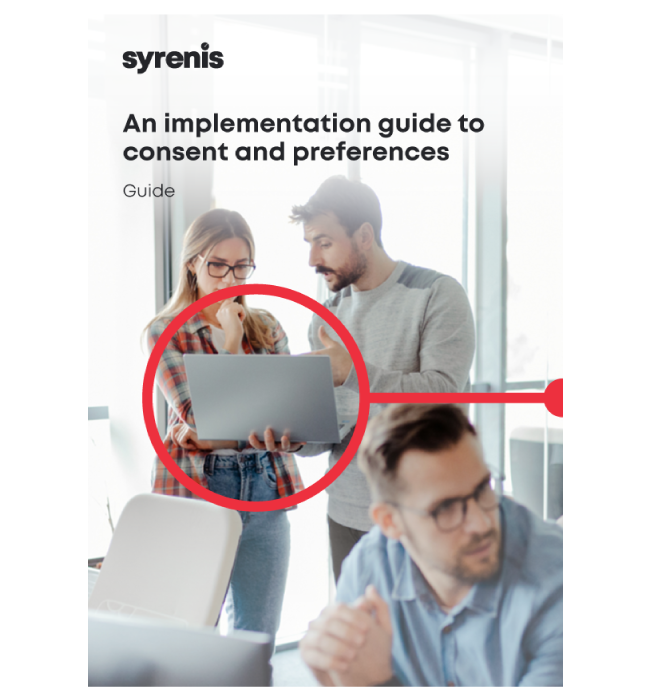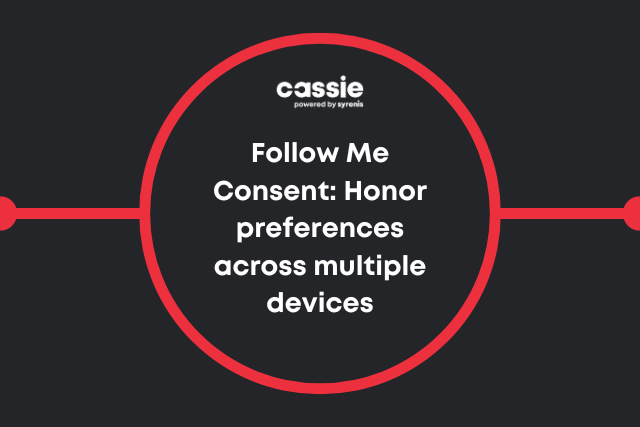When it comes to enterprise–level consent management, the idea of a “single user” is often a myth.
Users interact with your systems through multiple channels, roles, and identifiers, each creating a distinct “persona.”
For compliance and IT teams, this fragmentation introduces complexity in managing and honoring user consent. That’s where consent grouping comes in.
In this blog we’ll look at what consent grouping is, why it matters, and how it can help you deliver consistent, compliant, and user-respecting experiences across your digital estate.
- What is consent grouping?
- Why consent grouping matters
- How consent grouping works in practice
- Best practices for implementing consent grouping
What is consent grouping?
Consent grouping is the process of associating multiple user personas, each potentially with different identifiers, under a unified consent framework.
Grouping logic allows a single individual to maintain distinct consent preferences for different contexts (e.g., personal vs. work) while still being recognized as one user. This supports more nuanced consent scenarios required by organizations with complex requirements and high-volume environments.
In practice, this means:
- A user can opt into newsletters with their personal email and opt out with their work email.
- A customer can have separate consents for different services (e.g., streaming vs. shopping) under the same identity.
- Consent records can be queried and managed holistically or by persona.
Why consent grouping matters
1. Real-world identity is fragmented
Users don’t interact with your brand in a single, linear way. They may:
- Use different devices
- Log in with different credentials
- Provide different identifiers (email, phone, customer ID)
Without grouping, each of these interactions could be treated as a separate user, leading to inconsistent consent enforcement and a poor user experience.
2. Regulatory compliance requires precision
Regulations like GDPR and CCPA require that consent be: Informed, Specific, Revocable and Traceable.
If a user revokes consent in one context but continues to be tracked in another, you’re at risk. Both regulatory bodies and users expect consent to ‘follow’ them. Consent grouping ensures that revocations and preferences are respected across all relevant personas.
3. Data integrity and operational efficiency
Grouping reduces duplication and improves data hygiene. It enables:
- More accurate reporting
- Streamlined data subject access requests (DSARs)
- Efficient consent audits
How consent grouping works in practice
Let’s take a real-world example inspired by a recent enterprise implementation:
A user signs up for a streaming service with their personal email.
Later, they register for a shopping service with a work email.
Both services are part of the same enterprise ecosystem.
With consent grouping:
Each persona (streaming and shopping) is treated as a separate profile.
Both profiles are linked via a common identifier (e.g., email or customer ID).
The user can have different consent preferences for each profile.
The system can query and manage these consents either individually or as a group.
This is achieved through matching rules (to identify existing records) and grouping logic (to associate related records).
Best practices for implementing consent grouping
Define your personas clearly
Determine what constitutes a unique persona in your ecosystem; account type, email, device, etc.
Use flexible matching rules
Implement layered matching logic (e.g., customer ID > email > device ID) to identify and group users accurately.
Enable contextual consent
Allow users to set different preferences for different personas, and ensure your systems respect those distinctions.
Audit and monitor grouping logic
Regularly review your grouping rules to ensure they align with evolving business needs and regulatory requirements.
Design for scale
Consent grouping should support millions of users and billions of consent records without performance degradation.
Final thoughts
Consent grouping is not just a technical feature, it’s a strategic capability. It empowers your organization to deliver personalized, compliant, and trustworthy experiences in a world where users are anything but one-dimensional.
If your current consent management system treats every interaction as a new user, it’s time to rethink your architecture.

An implementation guide to consent and preferences
Use this document to help implement a Consent and Preference Management Platform (CPM) effectively by designing a comprehensive management framework.
Learn more
